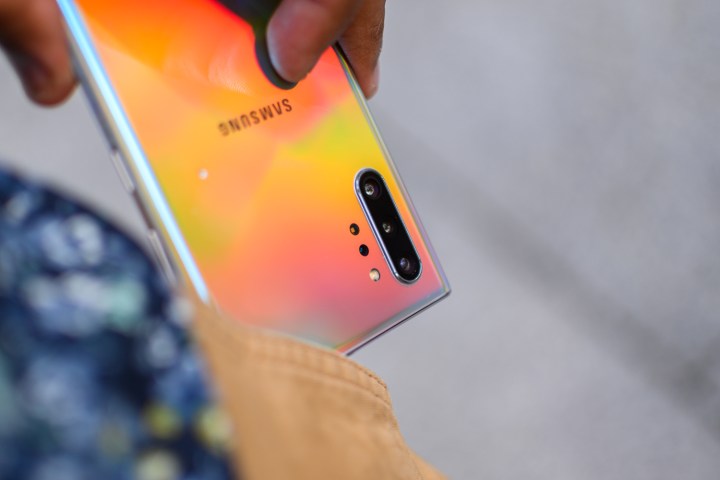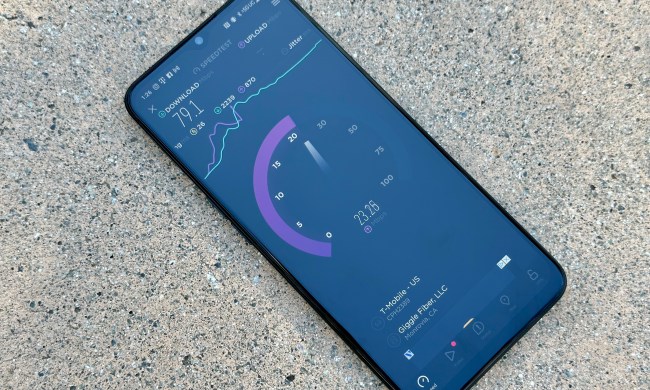
The Samsung Galaxy Note 10 and Galaxy Note 10+, and Note 10+ 5G are finally here, offering top-tier specs in a beautifully designed enclosure. Friday, Aug. 23 marked launch day for the hot new phones, which are likely to be a consumer favorite this year, carrying on the tradition of offering a huge display with plenty of productivity-focused features.
Of course, now that the device is finally available to consumers, you might be wondering where you can get your hands on it for yourself. That’s why we’ve put together this guide. Here’s everything you need to know about pricing and availability for the Samsung Galaxy Note 10 and Galaxy Note 10+.
Unlocked
Many people prefer to buy their phone unlocked, and there are a few ways to do so. For starters, you could get the device straight from Samsung, but the phone is also available from Amazon, Best Buy, Costco, Sam’s Club, Target, and Walmart. Here’s pricing for the unlocked Galaxy Note 10.
- Samsung Galaxy Note 10: $950.
- Samsung Galaxy Note 10+ 256GB: $1,100.
- Samsung Galaxy Note 10+ 512GB: $1,200.
Trade-in deals
While carriers have some trade-in deals of their own, perhaps the best deals come from Samsung itself. Notably, if you trade in an eligible phone you could get up to a whopping $600 off your Galaxy Note 10, meaning you’ll get it for a much more affordable $350. If you trade in a Google Pixel 3 or Pixel 3 XL, you’ll save a massive $600, while the trade-in value for other Pixel devices ranges between $200 and $300. This is a perfect deal for Galaxy Note 9 owners who want to upgrade, too — the Galaxy Note 9 will get you $600, as will the Galaxy S10 and the more recent iPhone models.
Carriers
Prefer to buy a Galaxy Note 10 or Galaxy Note 10+ through your preferred carrier? There are plenty of Galaxy Note 10 deals from carriers. Here’s everything you need to know.
AT&T
AT&T is offering the Samsung Galaxy Note 10 and Galaxy Note 10+, and says that it’s working with Samsung on releasing the Galaxy Note 10+ 5G in coming months. Here’s pricing of the Galaxy Note 10 and Galaxy Note+.
- Samsung Galaxy Note 10: $950, or $32 per month for 30 months on AT&T Next.
- Samsung Galaxy Note 10+ 256GB: $1,100, or $36.67 per month for 30 months on AT&T Next.
- Samsung Galaxy Note 10+ 512GB: $1,200, or $40 per month for 30 months on AT&T Next.
Sprint
Sprint is offering both the Galaxy Note 10 and Galaxy Note 10+ — specifically on the Sprint Flex Lease. Here’s a rundown of pricing for the Galaxy Note 10 on Sprint.
- Samsung Galaxy Note 10: $950, or $39.52 per month on the Sprint Flex lease.
- Samsung Galaxy Note 10+ 256GB: $1,100, or $52.08 per month on the Sprint Flex lease.
Unfortunately, if you didn’t pre-order the device on the Sprint Flex lease, you’ll have to pay full price — pricing was 50 percent off during the pre-order period.
T-Mobile
T-Mobile is carrying the Galaxy Note 10 and Galaxy Note 10+, and they’re both now available online and in-store. T-Mobile will also carry the Galaxy Note 10+ 5G at a later date. Pricing for the phones is as follows.
- Samsung Galaxy Note 10: $950, or $39.59 per month for 24 months.
- Samsung Galaxy Note 10+ 256GB: $1,100, or $39.59 per month for 24 months with $150 down.
- Samsung Galaxy Note 10+ 512GB: $1,200, or $39.59 per month for 24 months with $250 down.
T-Mobile has a few deals on the phones too. If you buy a Galaxy Note 10 or Note 10+, you’ll get a second Note 10 for free, or $950 toward a Note 10+, as long as you open a new line. You could also trade in a qualifying smartphone for up to $300 credit toward a Note 10 or Note 10+.
Verizon
Verizon is offering all three models of the Galaxy Note 10 — the Galaxy Note 10, Galaxy Note 10+, and Galaxy Note 10+ 5G. Pre-orders are now over, so the devices are available online and in-store. Here’s a rundown of pricing for the three phones.
- Samsung Galaxy Note 10: $950, or $39.58 per month for 24 months.
- Samsung Galaxy Note 10+ 256GB: $1,100, or $45.83 per month for 24 months.
- Samsung Galaxy Note 10+ 512GB: $1,200, or $49.99 per month for 24 months.
- Samsung Galaxy Note 10+ 5G 256GB: $1,300, or $54.16 per month for 24 months.
- Samsung Galaxy Note 10+ 5G 512GB: $1,400, or $58.33 per month for 24 months.
Verizon also has a few deals going for the phones. Notably, if you buy a Galaxy Note 10 model on a device payment plan, you’ll get a second Galaxy Note 10 for free — or $950 toward a different Galaxy Note 10 or Galaxy S10 model. A new line of service and an unlimited plan are required, and the credit is applied over 24 or 36 months.
Also, trade-ins will get you up to $450 of credit toward a Galaxy Note 10 on a Verizon device payment plan, as long as the plan is unlimited. Keep in mind that you can’t use this deal in conjunction with the BOGO deal mentioned before — so you’ll have to go with one or the other.
Xfinity Mobile
Xfinity Mobile is offering the Galaxy Note 10 and Galaxy Note 10+, too. Pricing for the Galaxy Note 10 and Galaxy Note 10+ can be found below.
- Samsung Galaxy Note 10: $950, or $39.58 per month for 24 months.
- Samsung Galaxy Note 10+: $1,100, or $45.83 per month for 24 months.
Xfinity is offering a few deals for the Galaxy Note 10, too. For example, anyone who buys the new device, activates a new line, and ports their number to Xfinity Mobile will get a $250 prepaid card.


